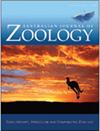气候变化对一种极度濒危的澳大利亚有袋动物的生理影响
IF 1
4区 生物学
Q3 ZOOLOGY
引用次数: 2
摘要
摘要极端天气事件(如热浪和干旱)会使动物暴露在其生理耐受区甚至抗性区之外的环境条件下,并影响种群和物种的长期生存能力。我们研究了极度濒危的西部环尾负鼠(Pseudocheirus occidentalis)的热生理和水分生理,它是叶食性有袋动物(Pseudocheiridae)家族的一员,对极端环境特别脆弱。在30°C环境温度下测量的基础代谢率和其他标准生理变量与其他有袋动物的值一致。在较低温度下,体温略有下降,代谢率在5℃时显著升高。在较高的温度下,负鼠经历了轻微的高温,通过舔而不是喘气来增加蒸发热量的损失。它们的相对水经济点(-8.7°C)比其他种类的负鼠和无尾熊(Phascolarctos cinereus)更有利。我们预测西部环尾负鼠能够很好地耐受低温,并且比普通环尾负鼠(Pseudocheirus peregrinus),特别是绿环尾负鼠(Pseudochirops archeri)和考拉更能适应高温和干燥的生理条件。我们的生理数据可以被纳入到机械物种分布模型中,以验证我们的假设,即西部环尾负鼠应该在生理上能够忍受栖息地比它们目前分布的更内陆的气候,并承受西澳大利亚西南部气候变化的适度影响。本文章由计算机程序翻译,如有差异,请以英文原文为准。
Physiological implications of climate change for a critically endangered Australian marsupial
Abstract. Extreme weather events (e.g. heatwaves and droughts) can expose animals to environmental conditions outside of their zones of physiological tolerance, and even resistance, and impact long-term viability of populations and species. We examined the thermal and hygric physiology of the critically endangered western ringtail possum (Pseudocheirus occidentalis), a member of a family of marsupial folivores (Pseudocheiridae) that appear particularly vulnerable to environmental extremes. Basal metabolic rate and other standard physiological variables measured at an ambient temperature of 30°C conformed to values for other marsupials. At lower temperatures, body temperature decreased slightly, and metabolic rate increased significantly at 5°C. At higher temperatures, possums experienced mild hyperthermia and increased evaporative heat loss by licking rather than panting. Their point of relative water economy (–8.7°C) was more favourable than other pseudocheirid possums and the koala (Phascolarctos cinereus). We predict that western ringtail possums should tolerate low ambient temperatures well and be more physiologically tolerant of hot and dry conditions than common (Pseudocheirus peregrinus) and particularly green (Pseudochirops archeri) ringtail possums, and koalas. Our physiological data can be incorporated into mechanistic species distribution models to test our hypothesis that western ringtail possums should physiologically tolerate the climate of habitat further inland than their current distribution, and withstand moderate impacts of climate change in the south-west of Western Australia.
求助全文
通过发布文献求助,成功后即可免费获取论文全文。
去求助
来源期刊
CiteScore
2.40
自引率
0.00%
发文量
12
审稿时长
>12 weeks
期刊介绍:
Australian Journal of Zoology is an international journal publishing contributions on evolutionary, molecular and comparative zoology. The journal focuses on Australasian fauna but also includes high-quality research from any region that has broader practical or theoretical relevance or that demonstrates a conceptual advance to any aspect of zoology. Subject areas include, but are not limited to: anatomy, physiology, molecular biology, genetics, reproductive biology, developmental biology, parasitology, morphology, behaviour, ecology, zoogeography, systematics and evolution.
Australian Journal of Zoology is a valuable resource for professional zoologists, research scientists, resource managers, environmental consultants, students and amateurs interested in any aspect of the scientific study of animals.
Australian Journal of Zoology is published with the endorsement of the Commonwealth Scientific and Industrial Research Organisation (CSIRO) and the Australian Academy of Science.

 求助内容:
求助内容: 应助结果提醒方式:
应助结果提醒方式:


